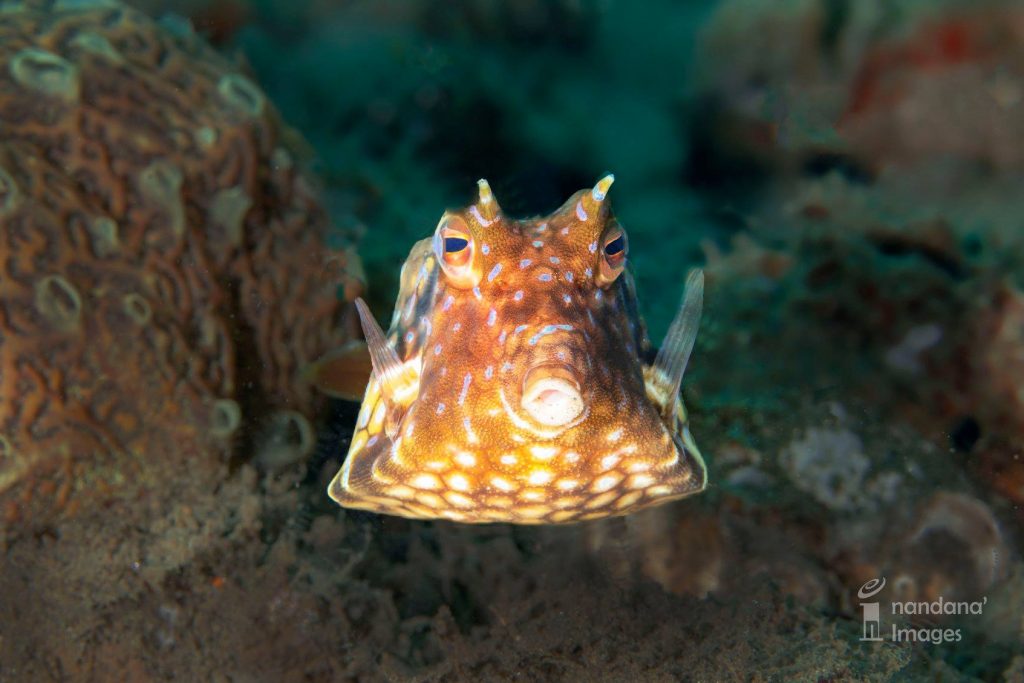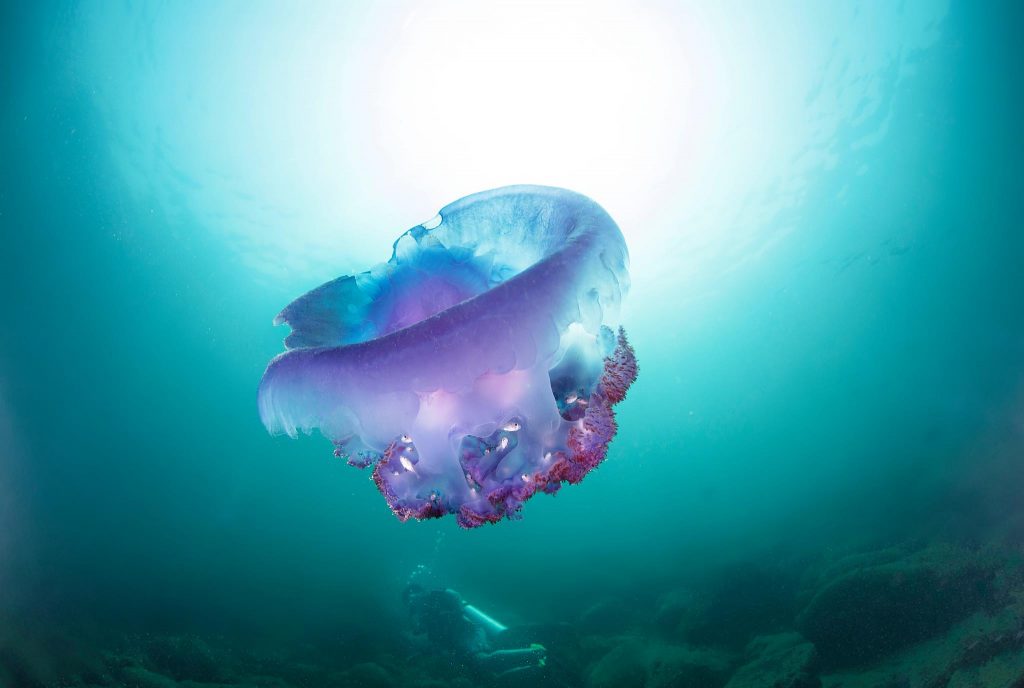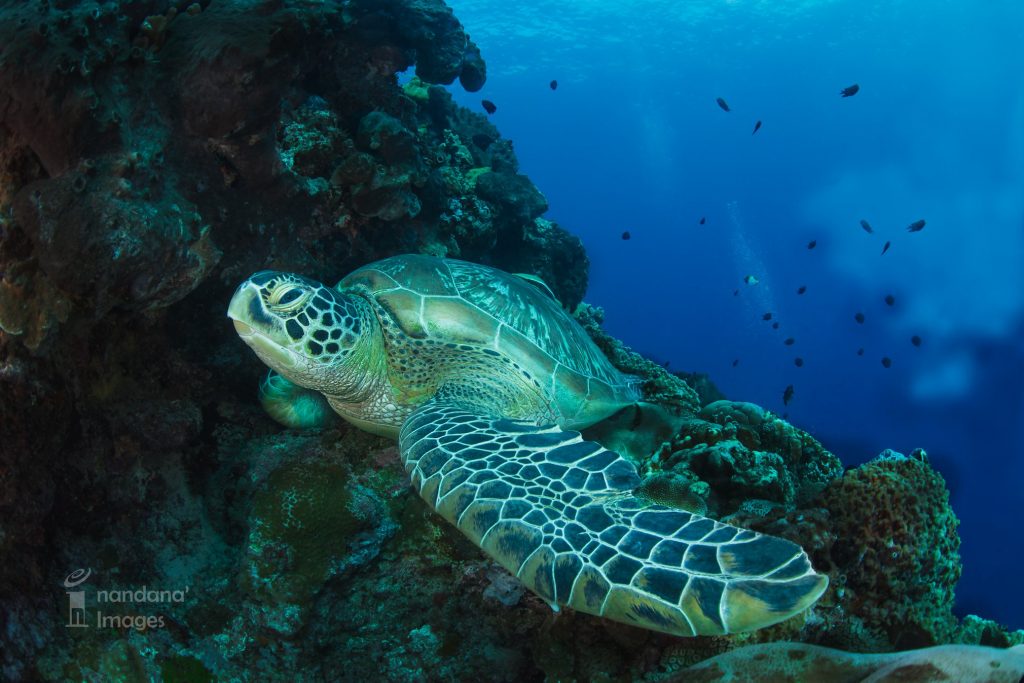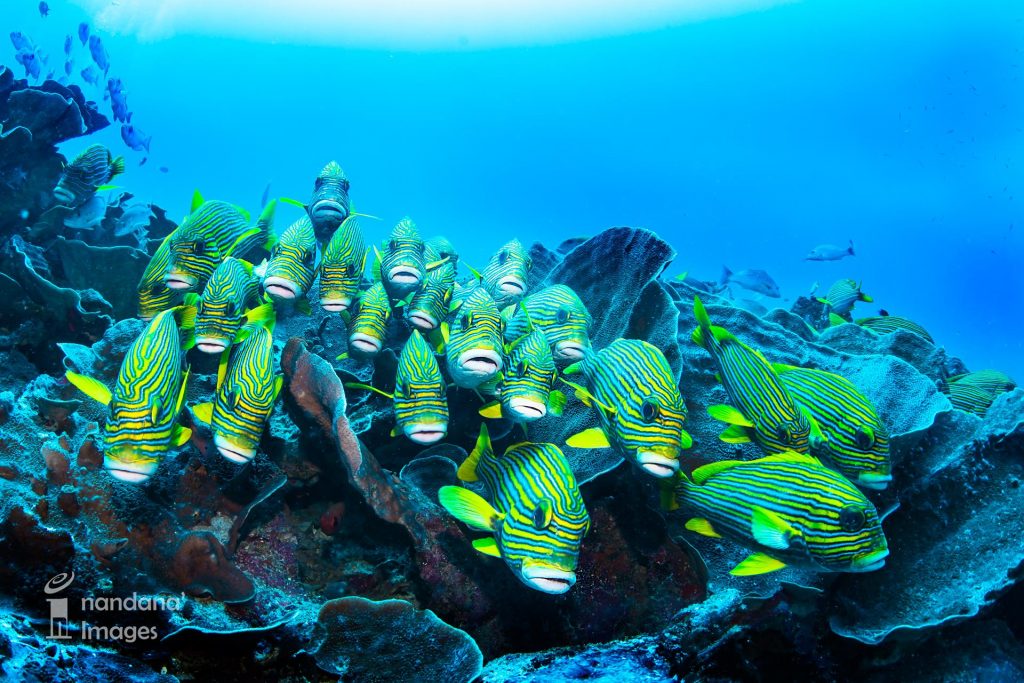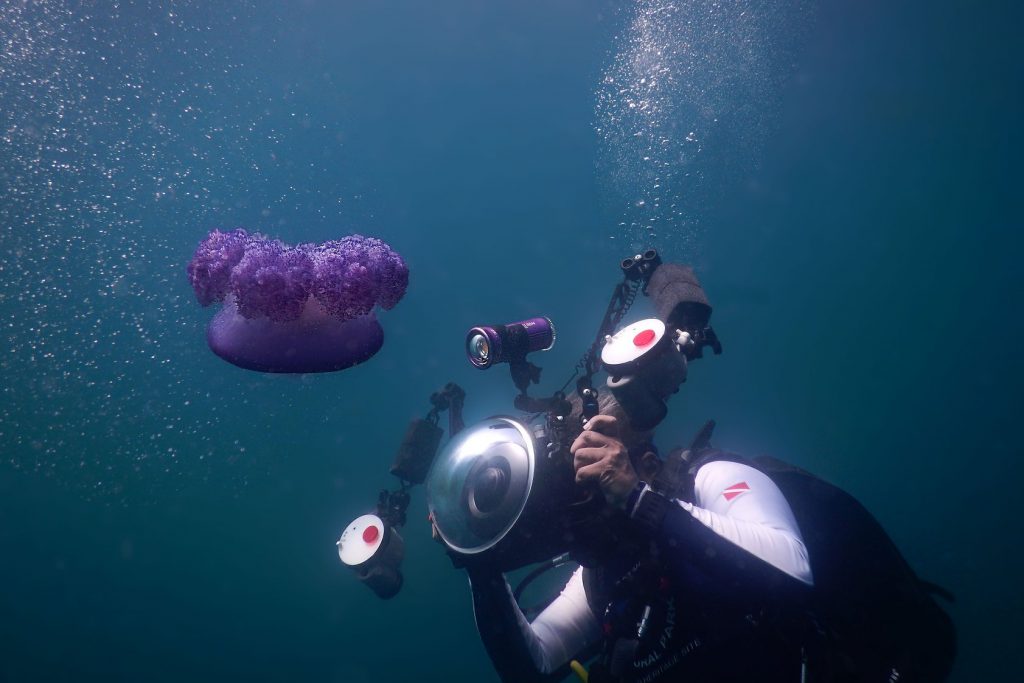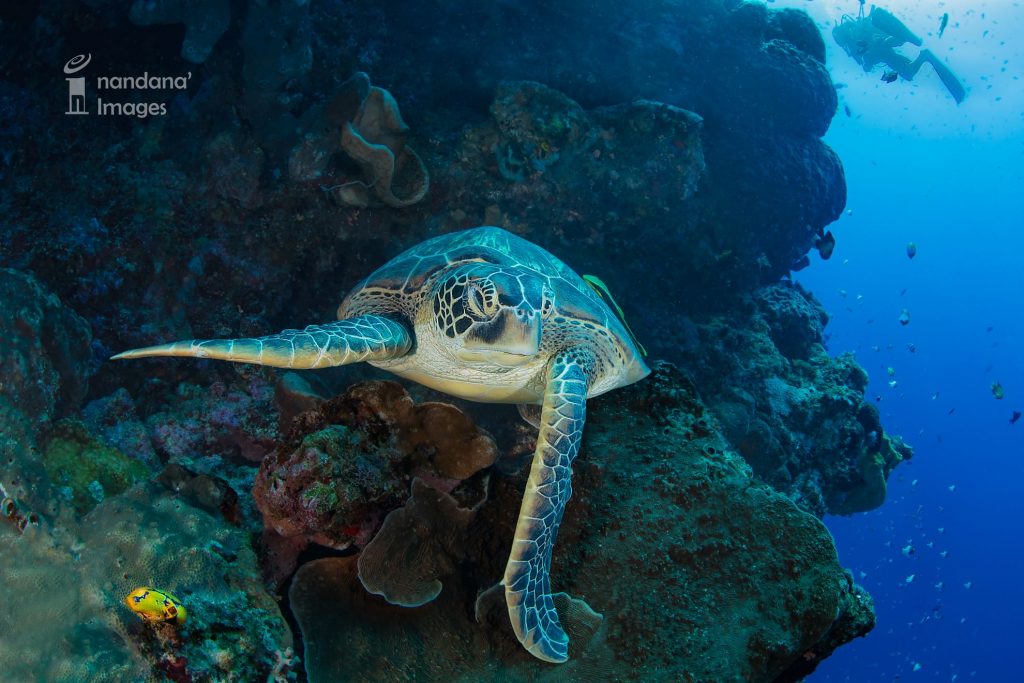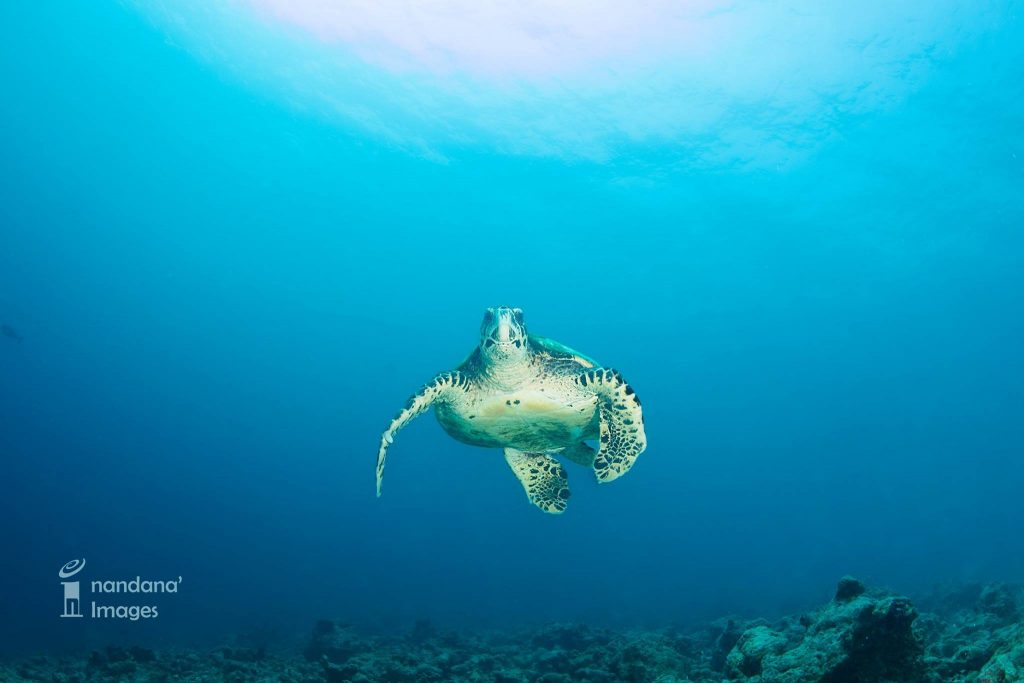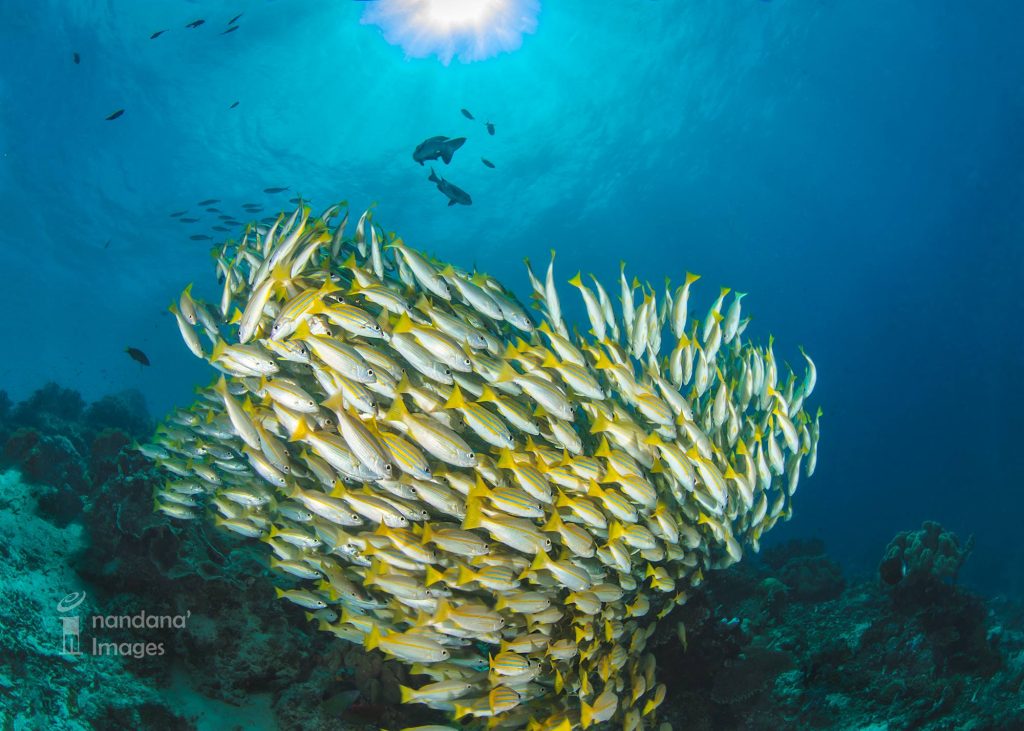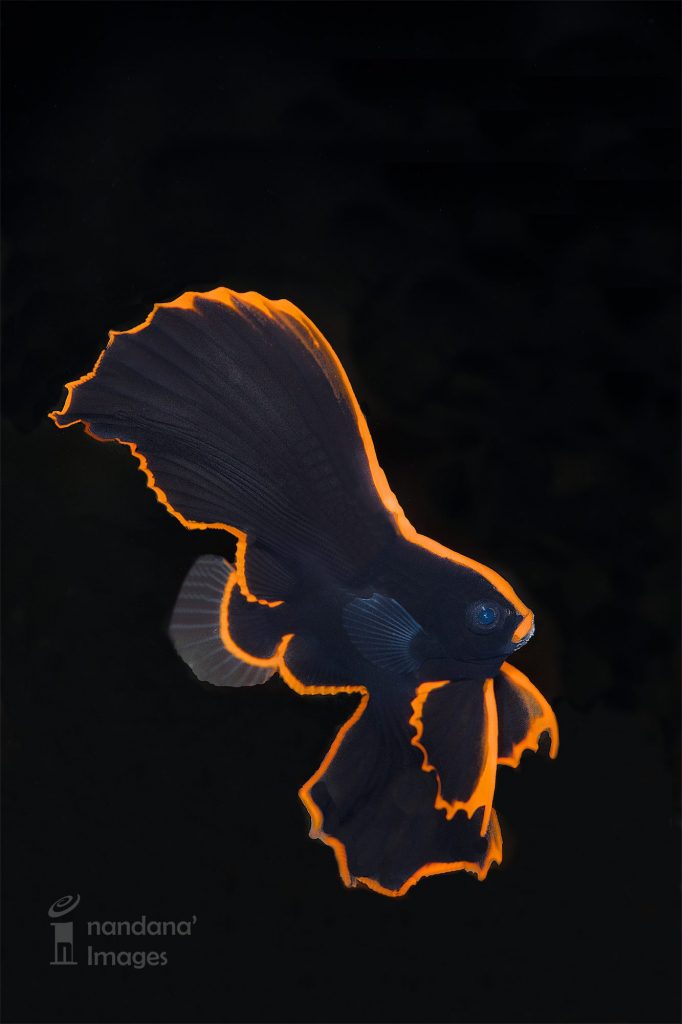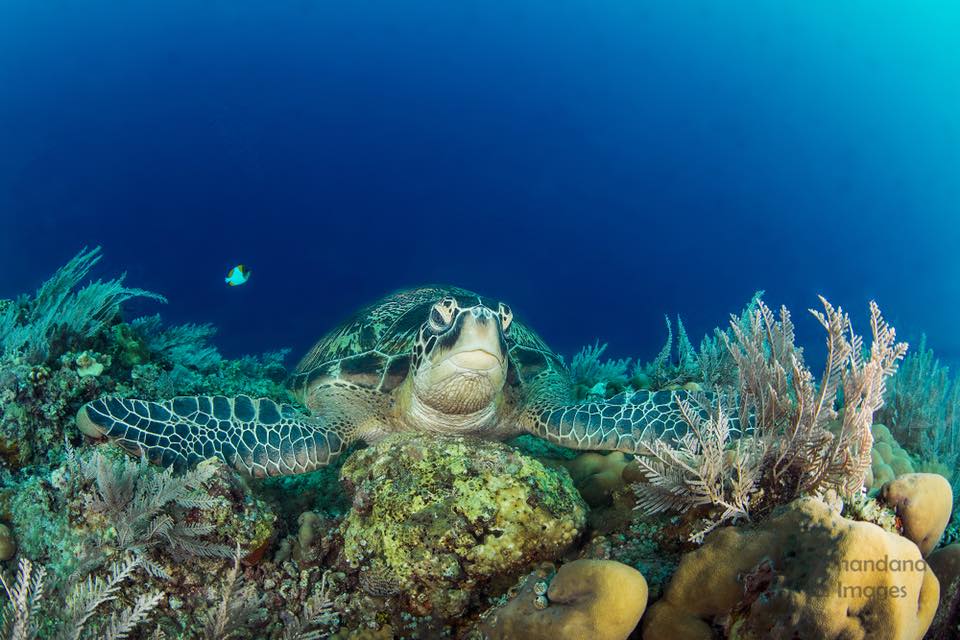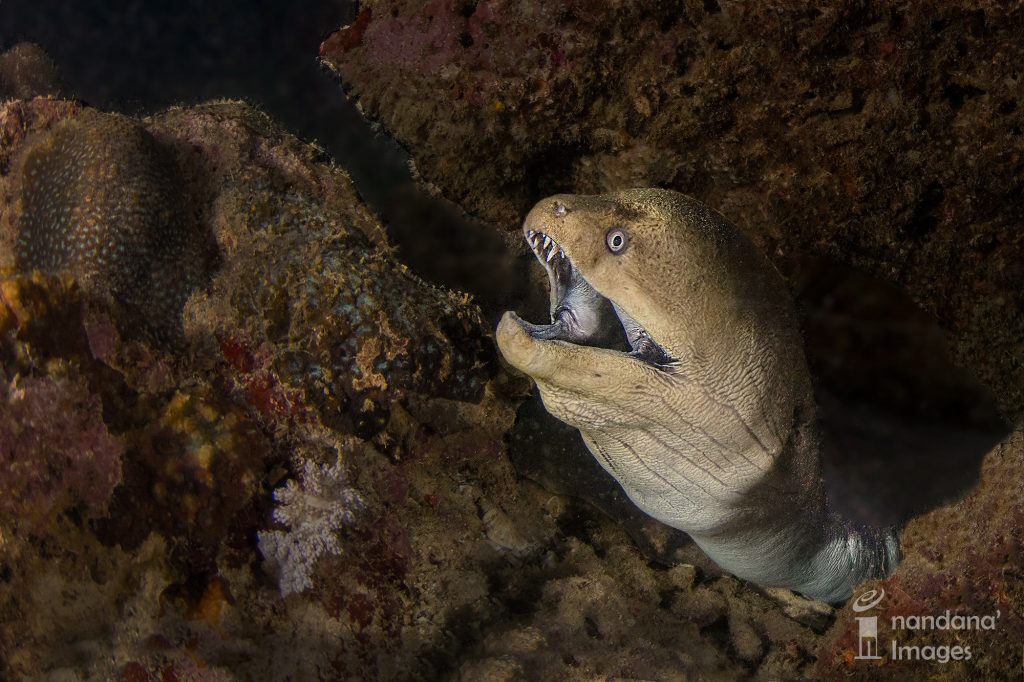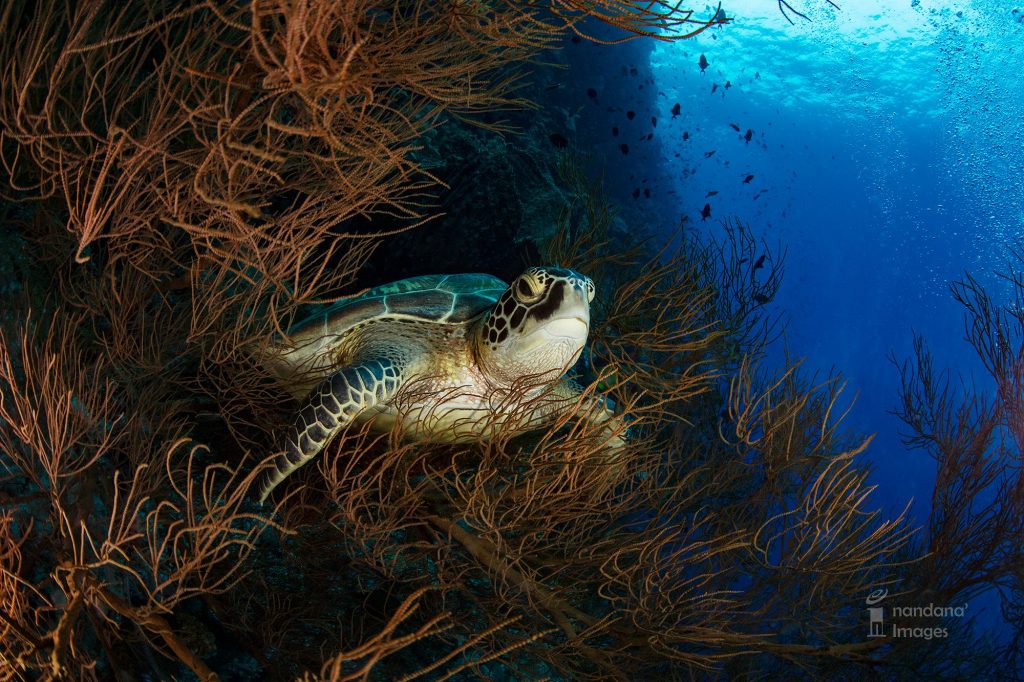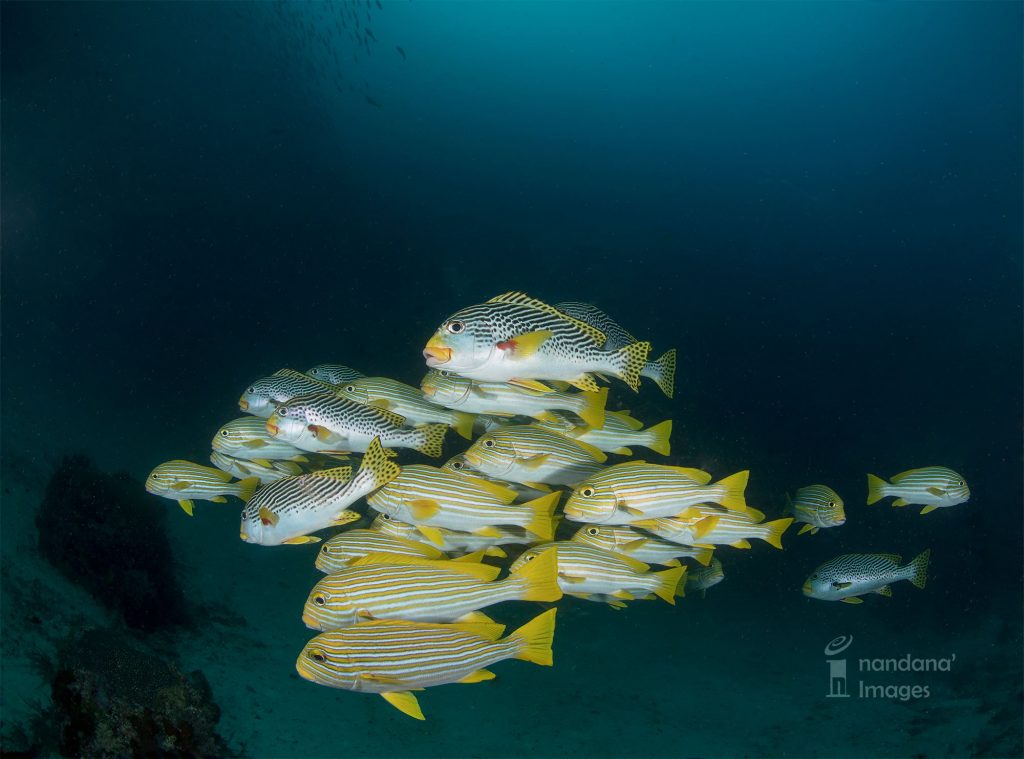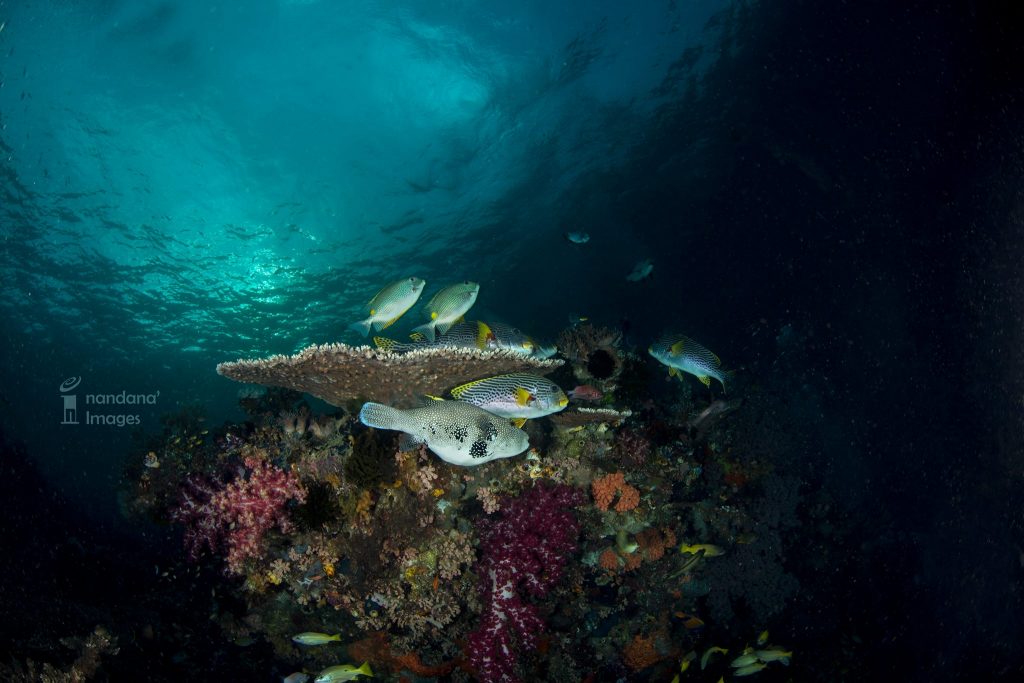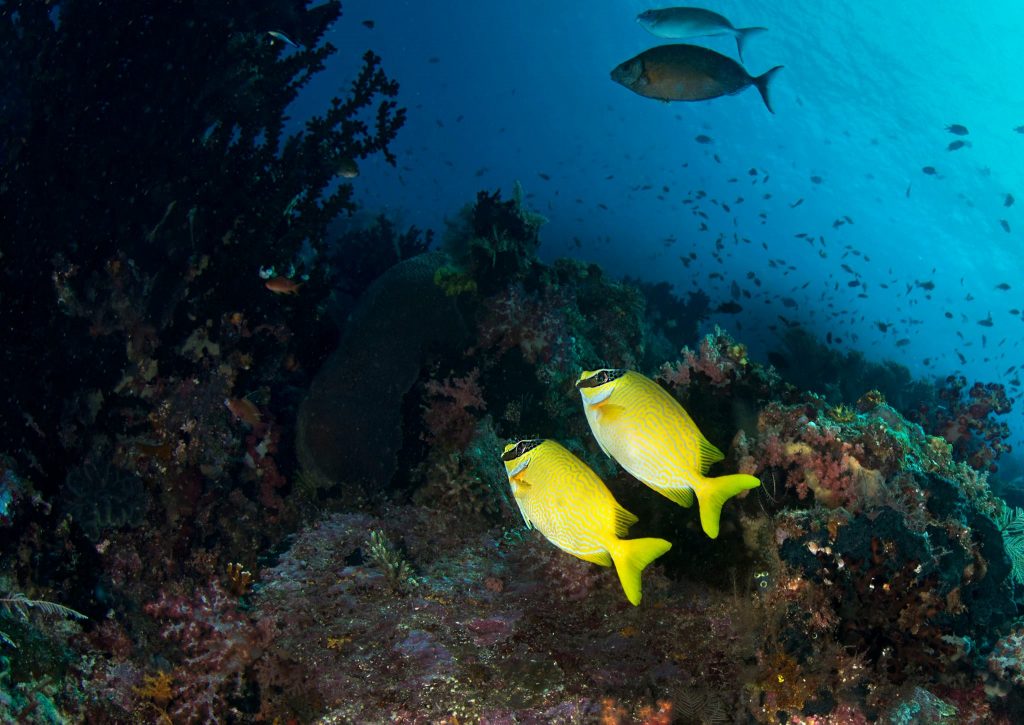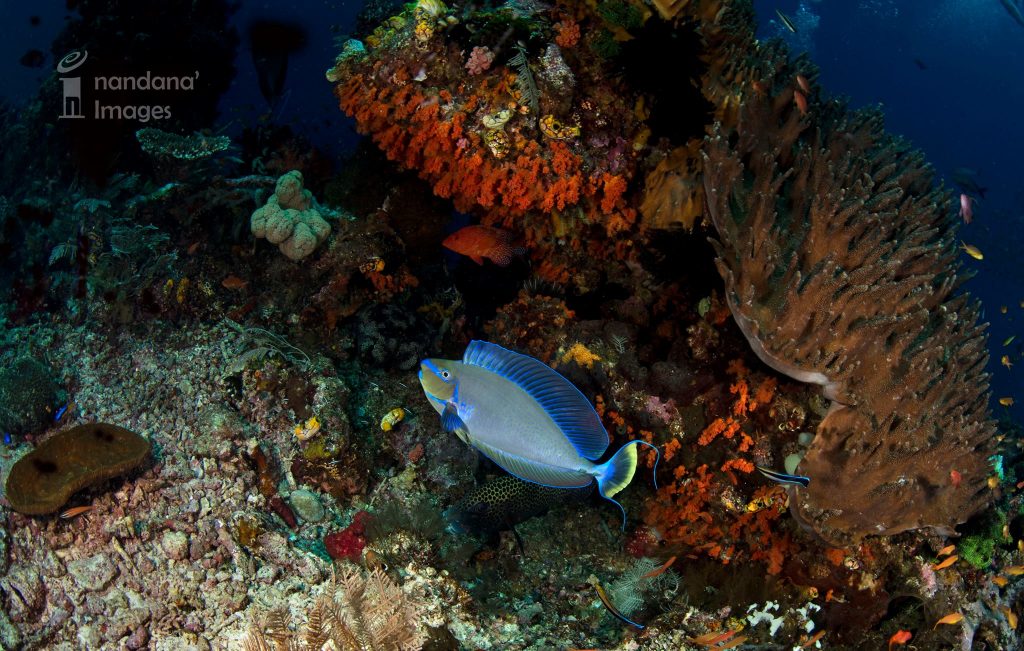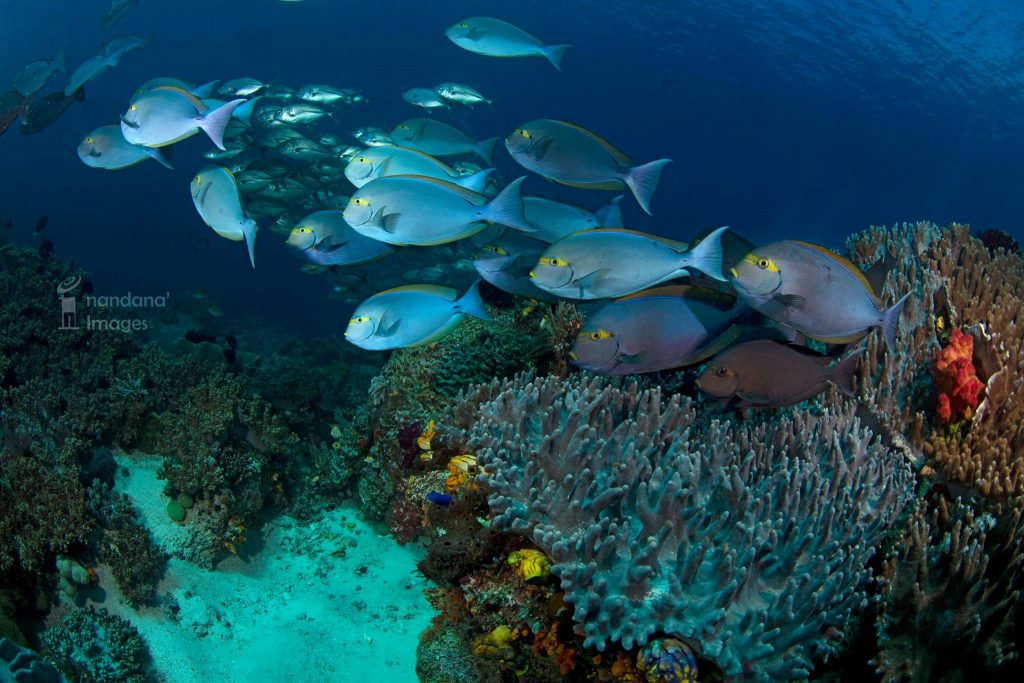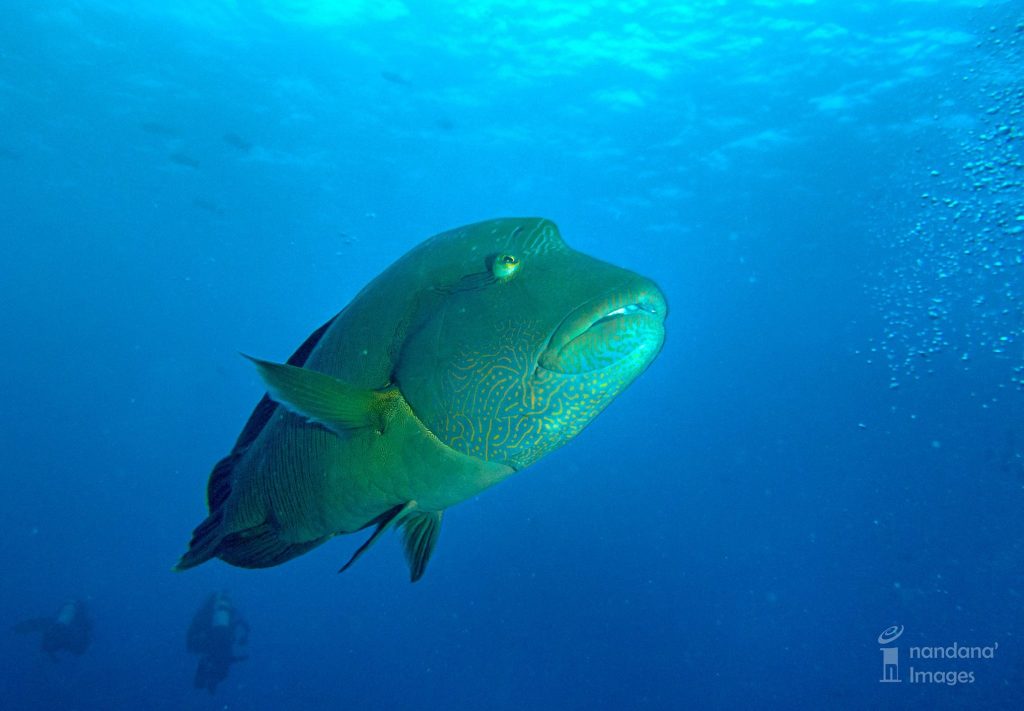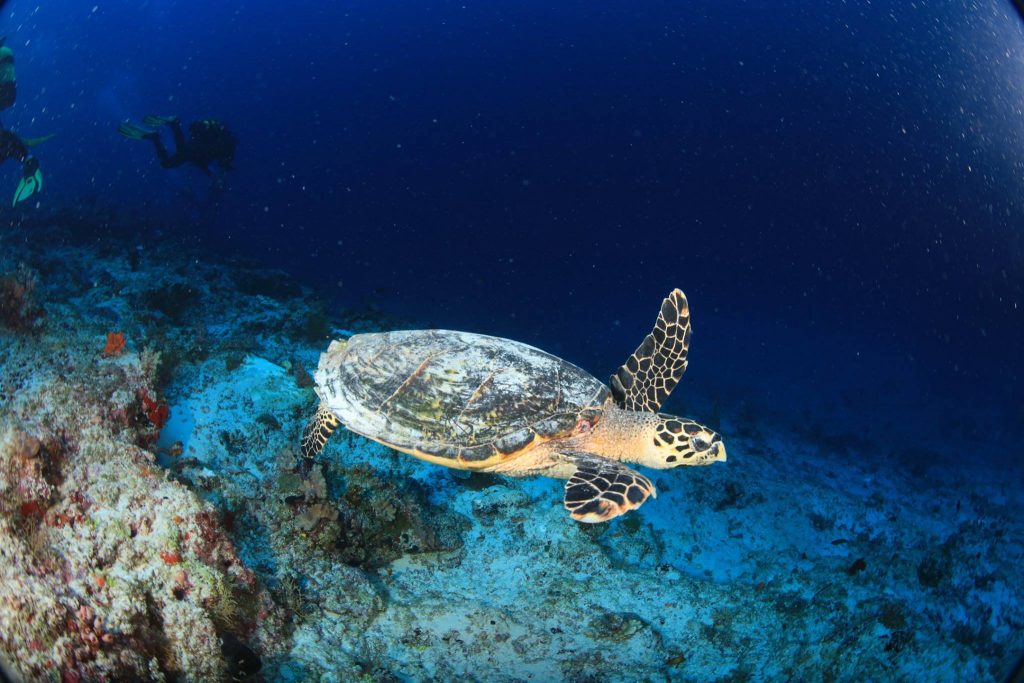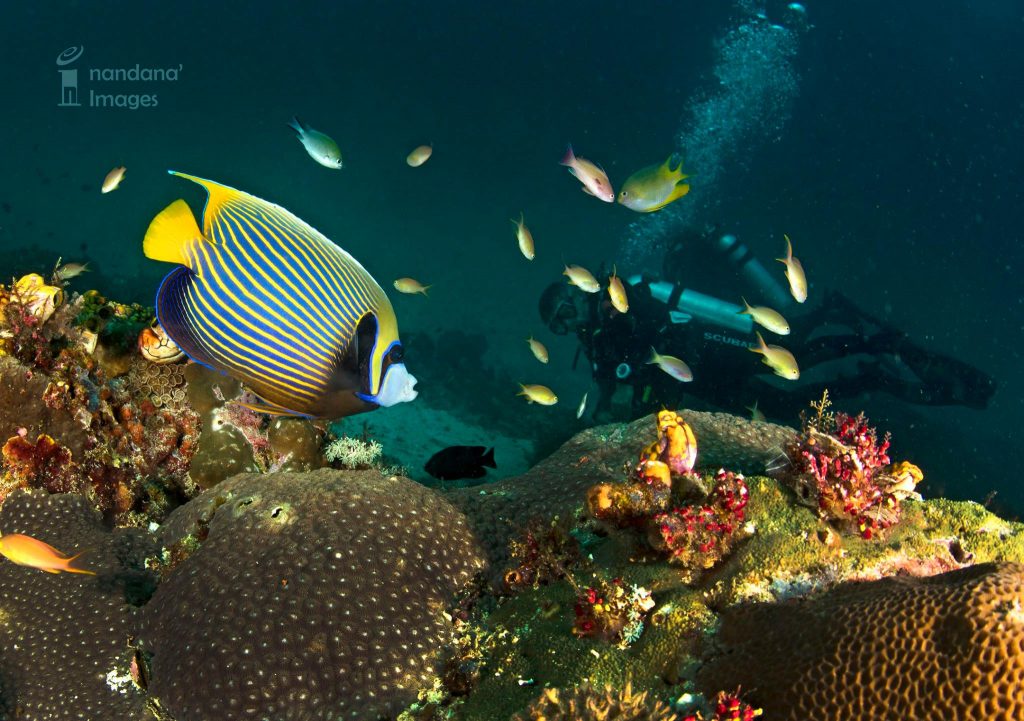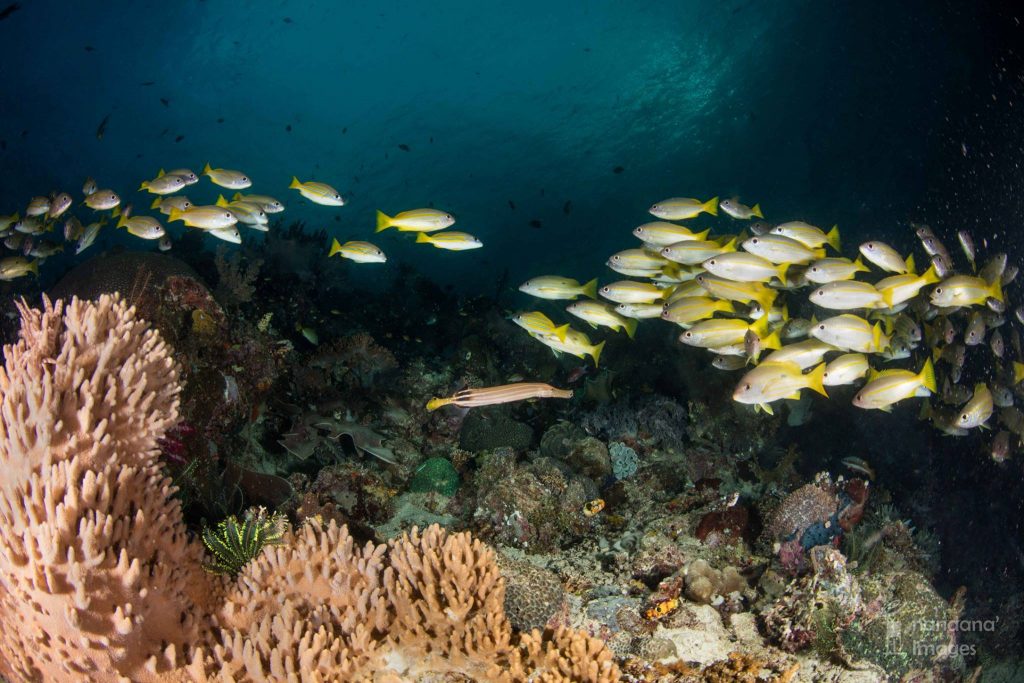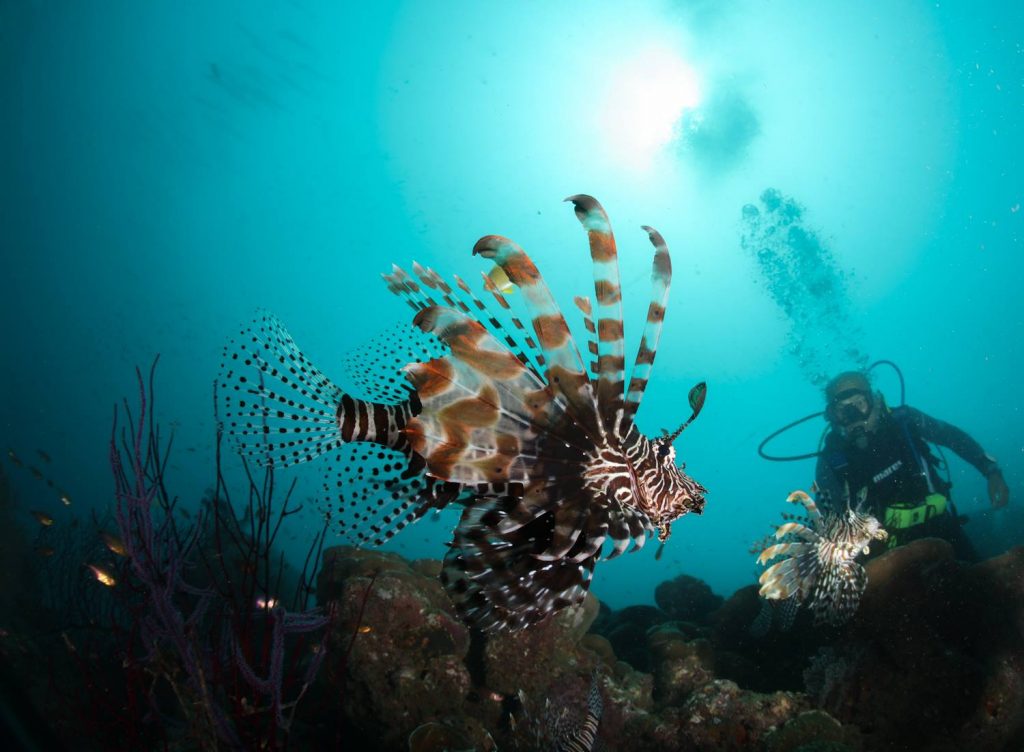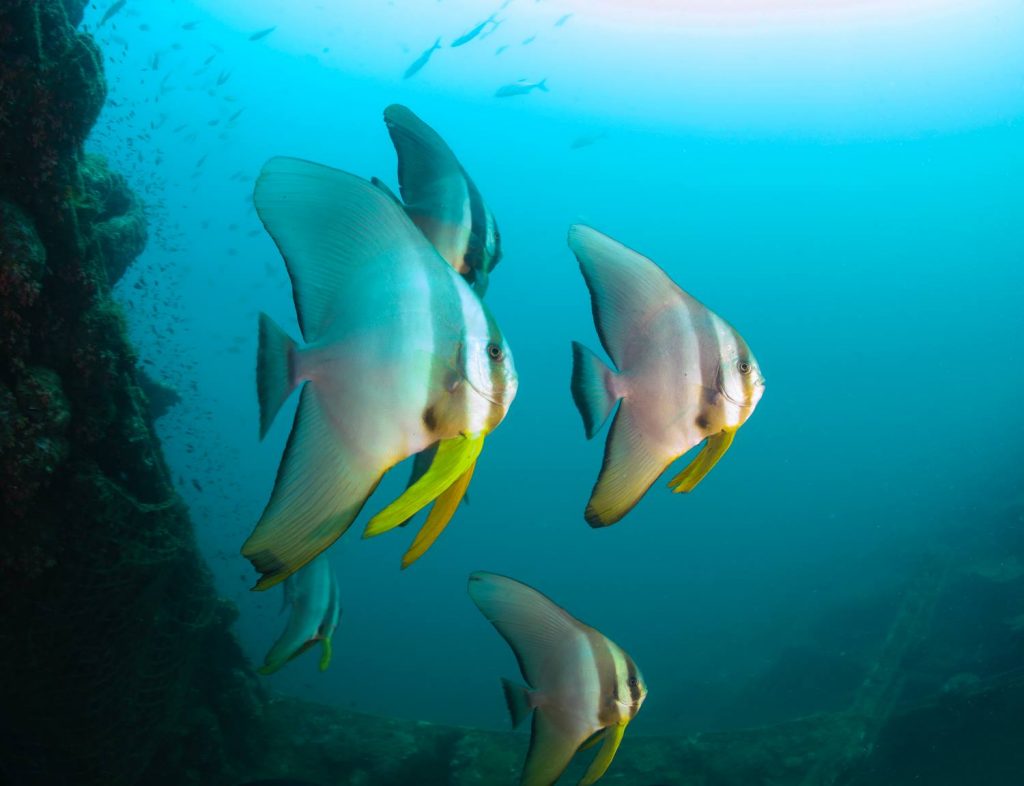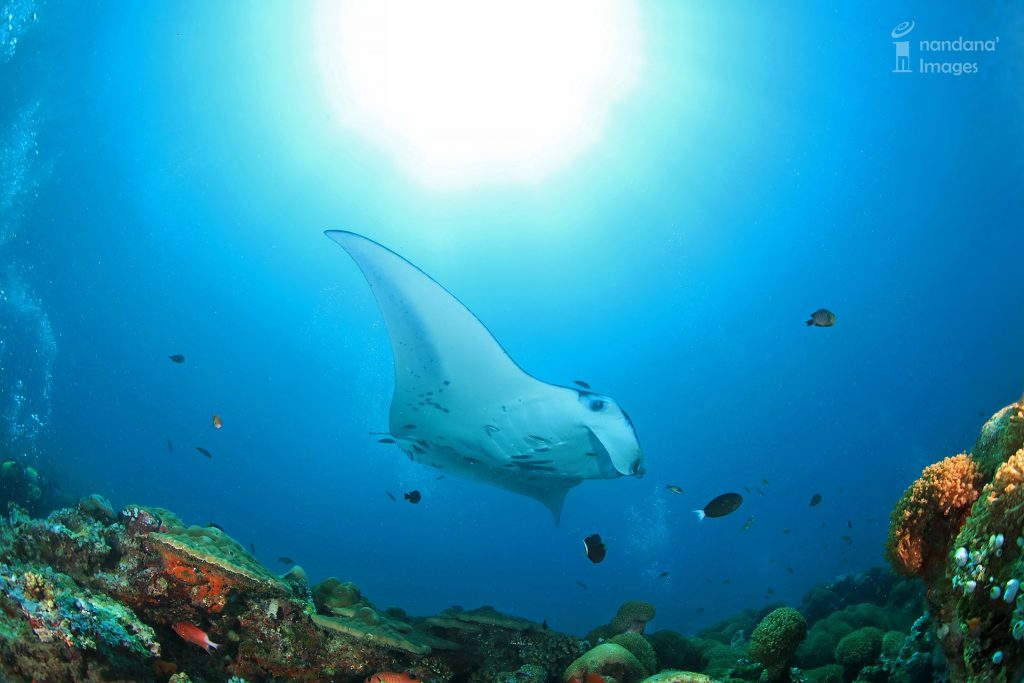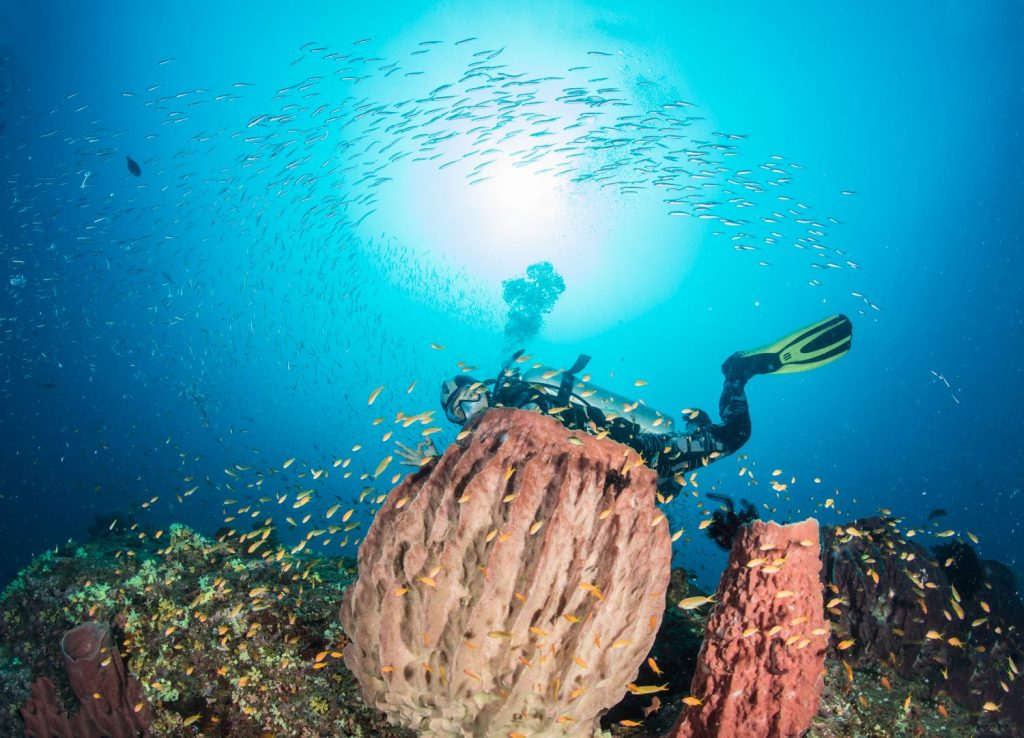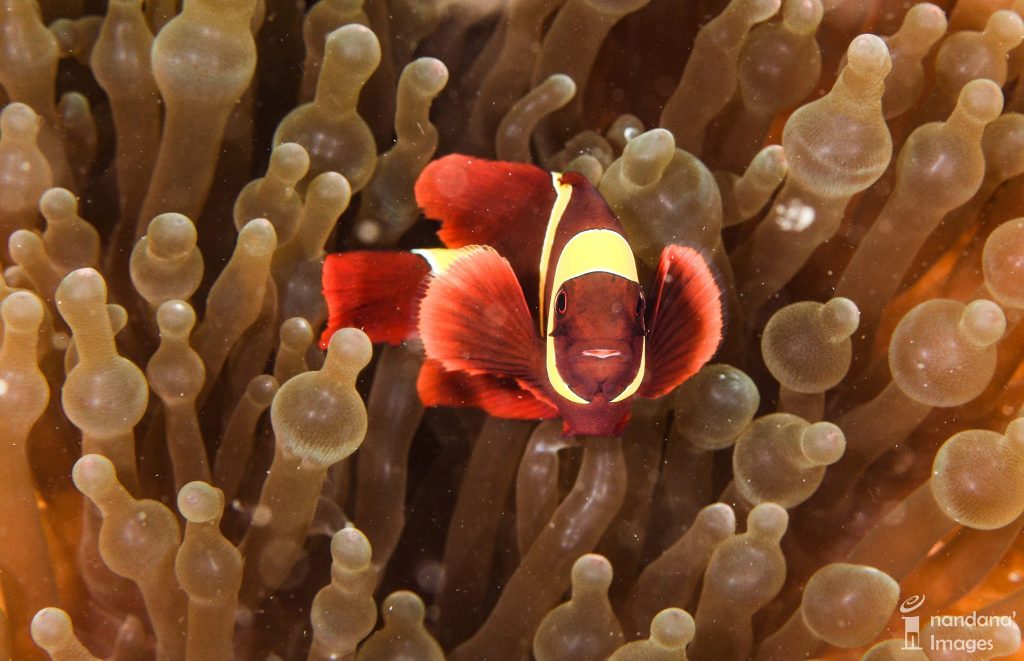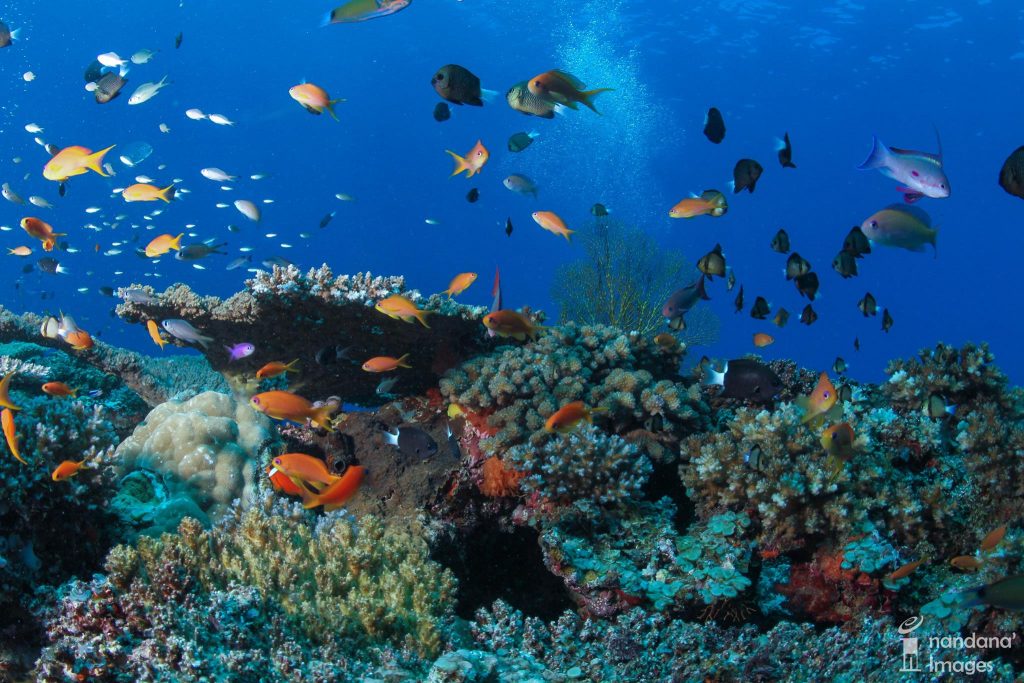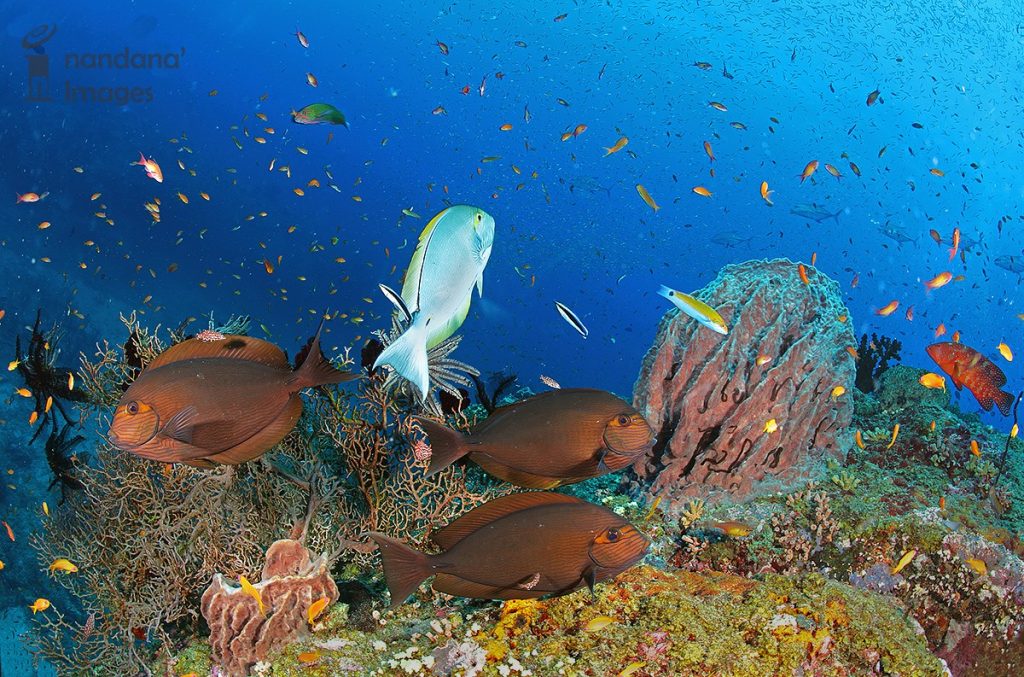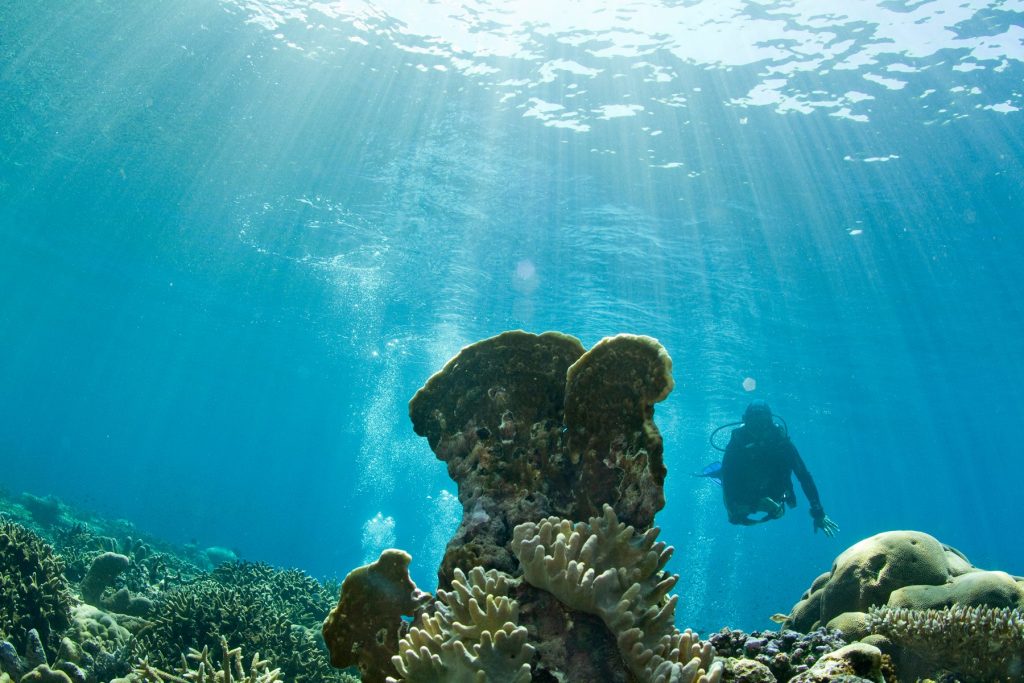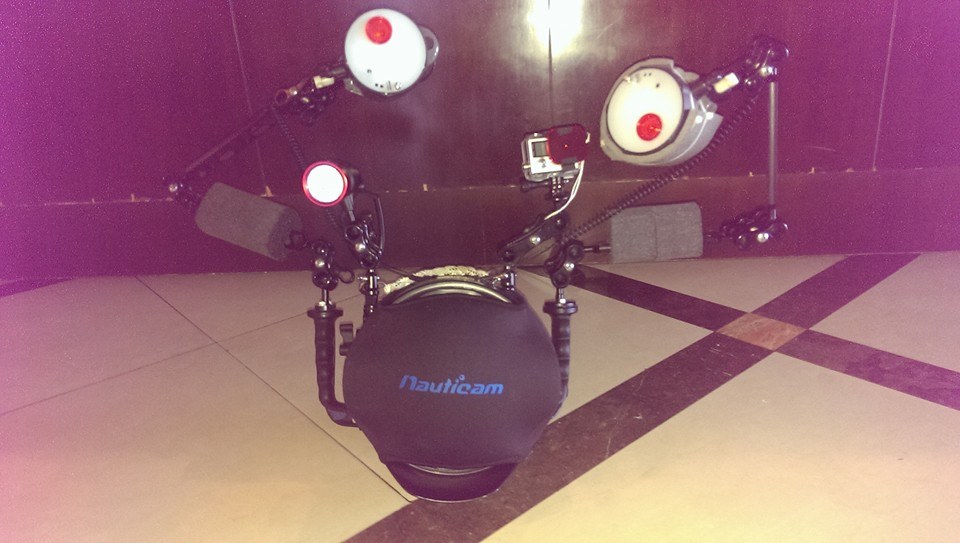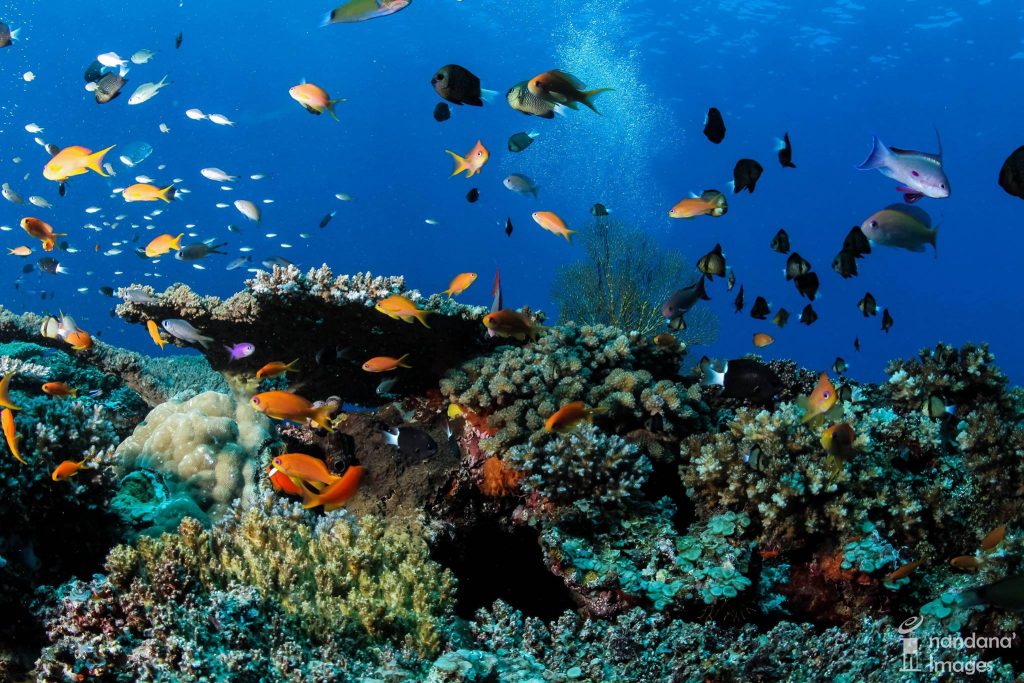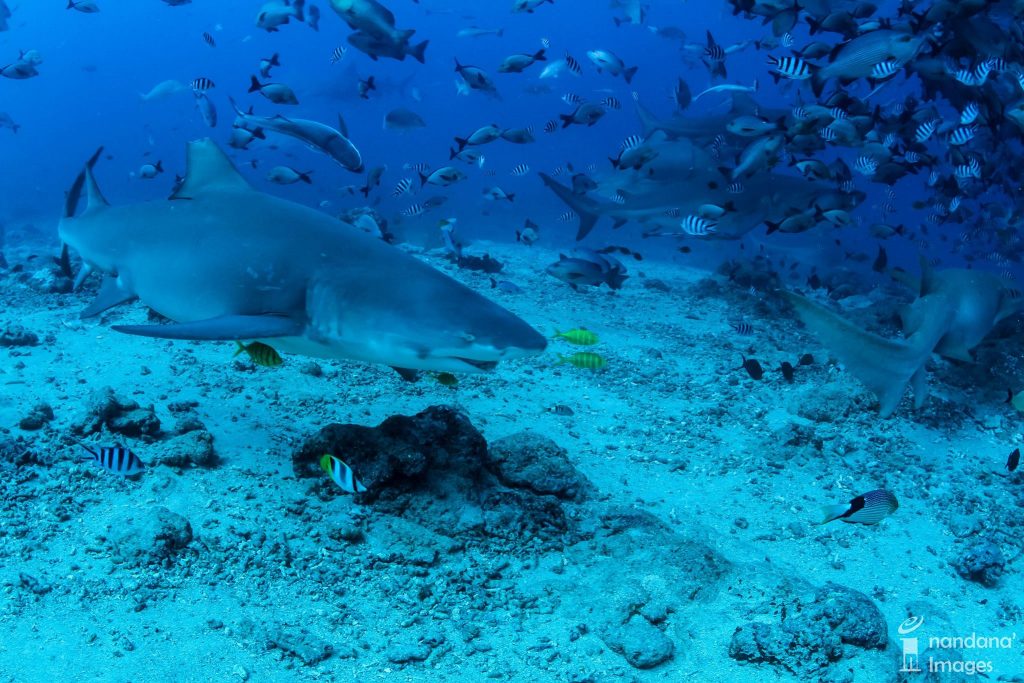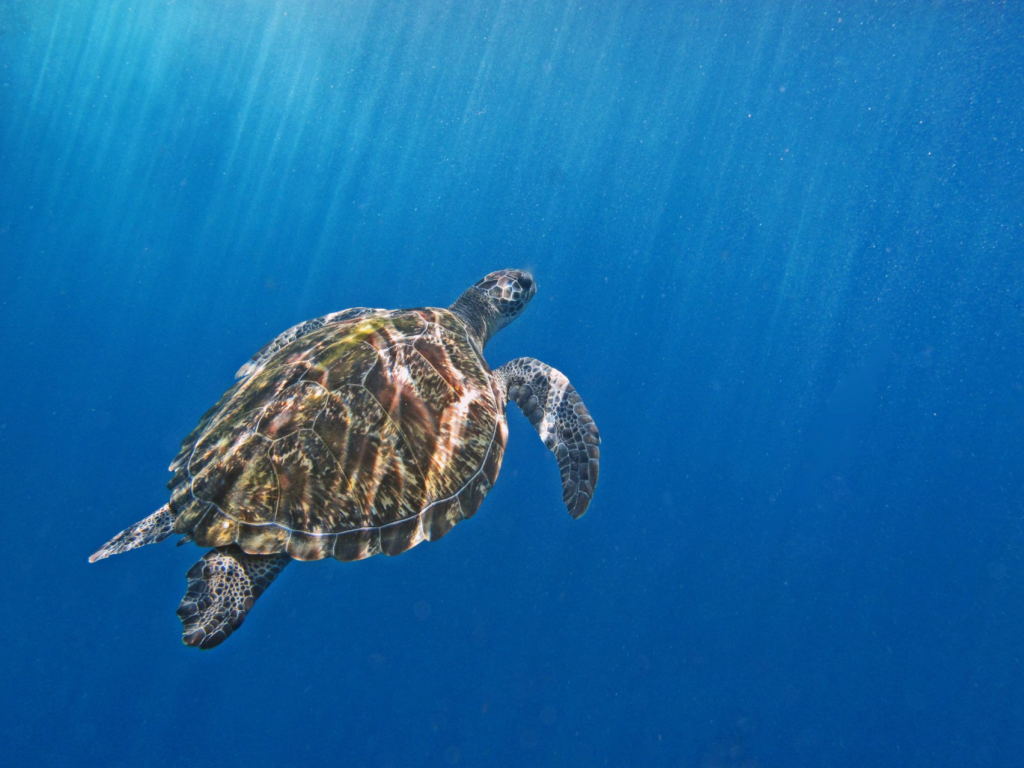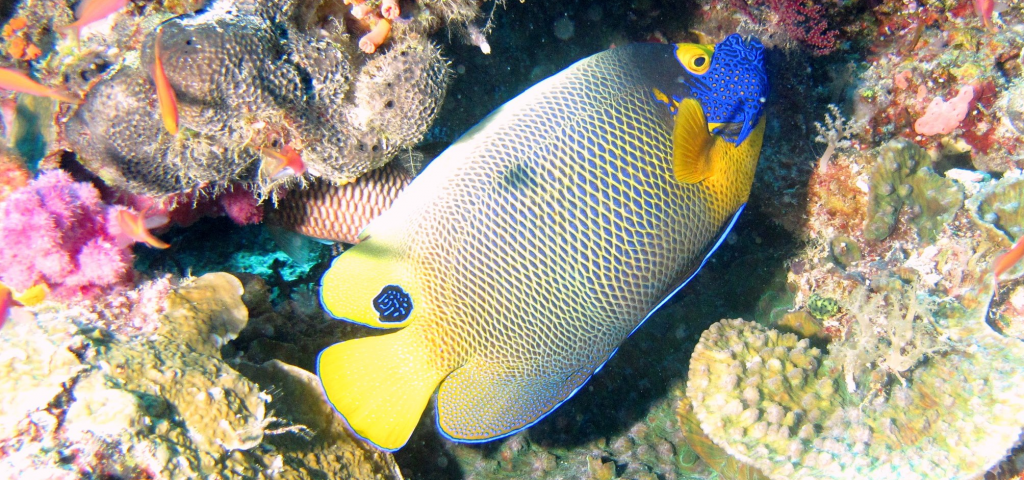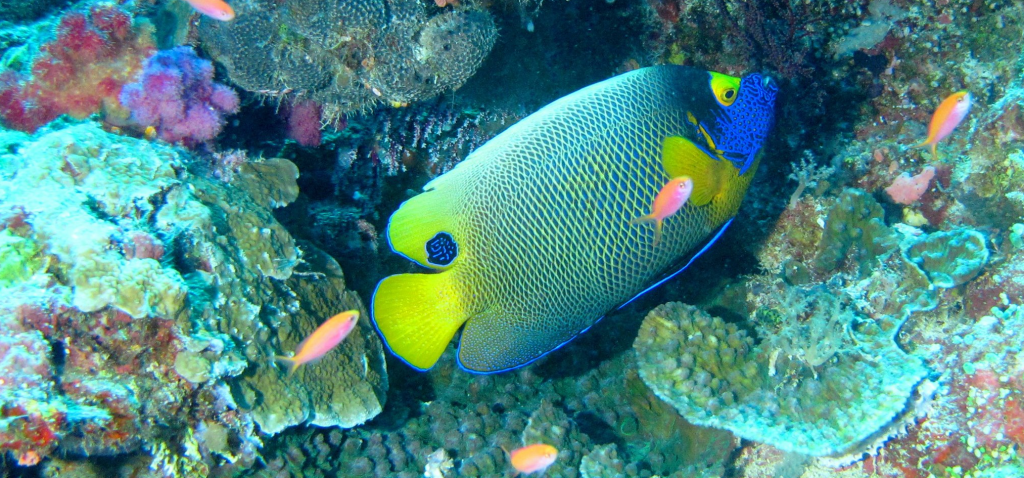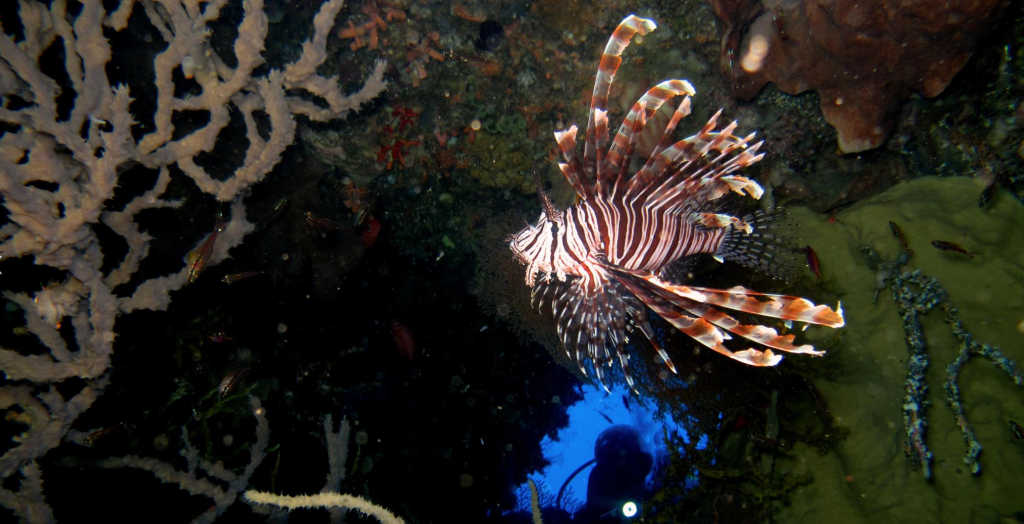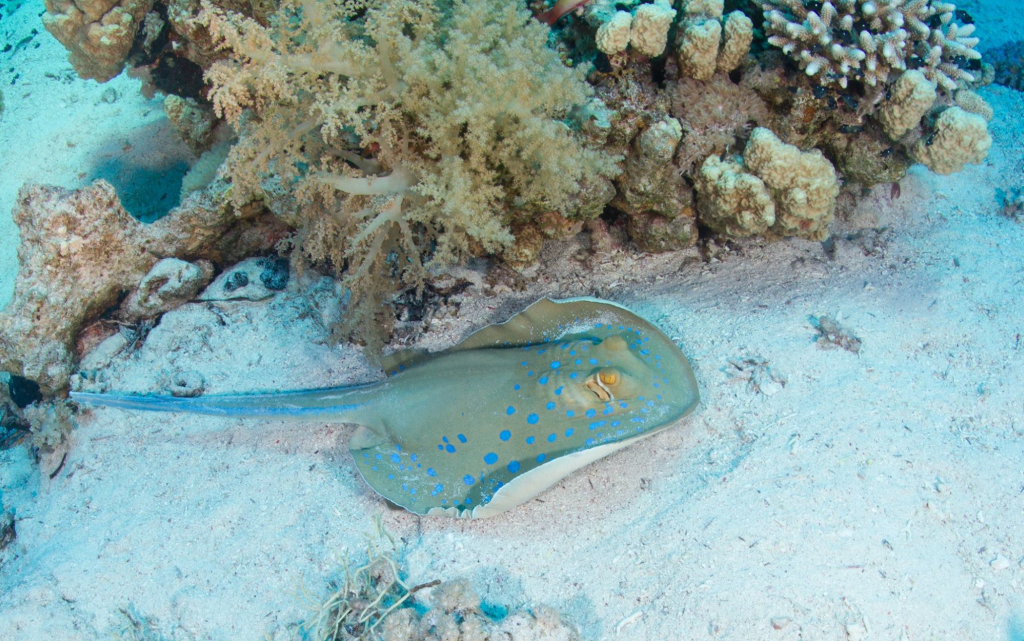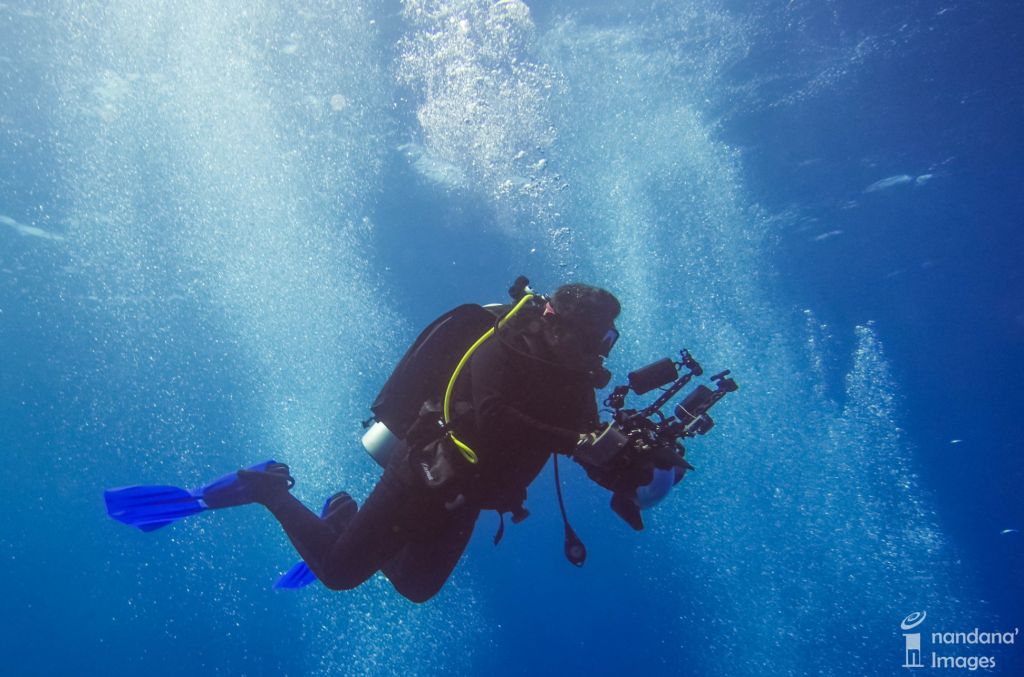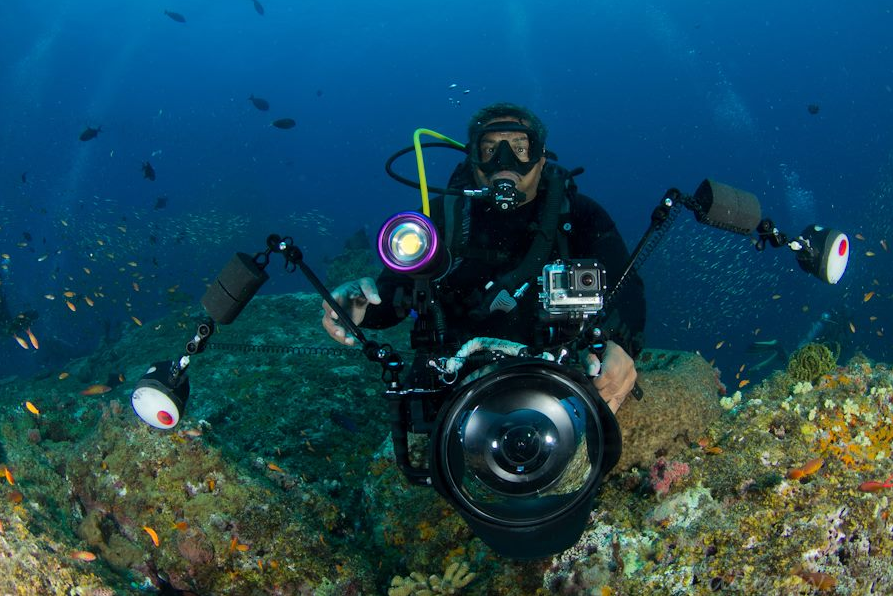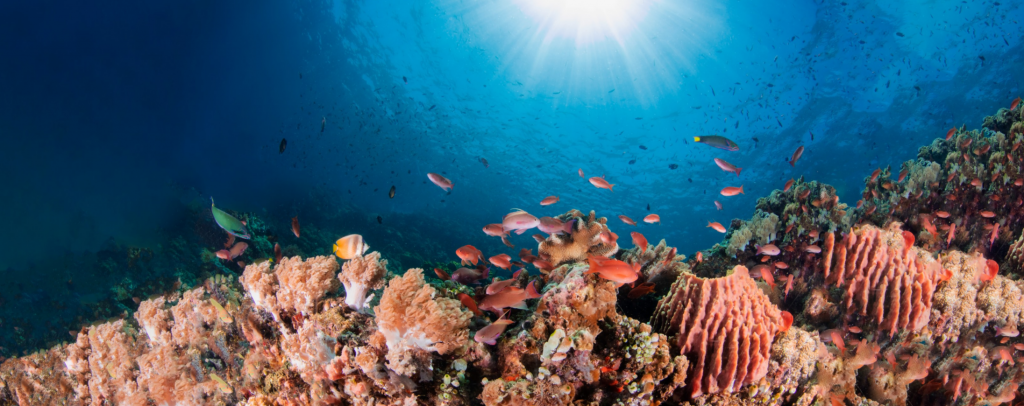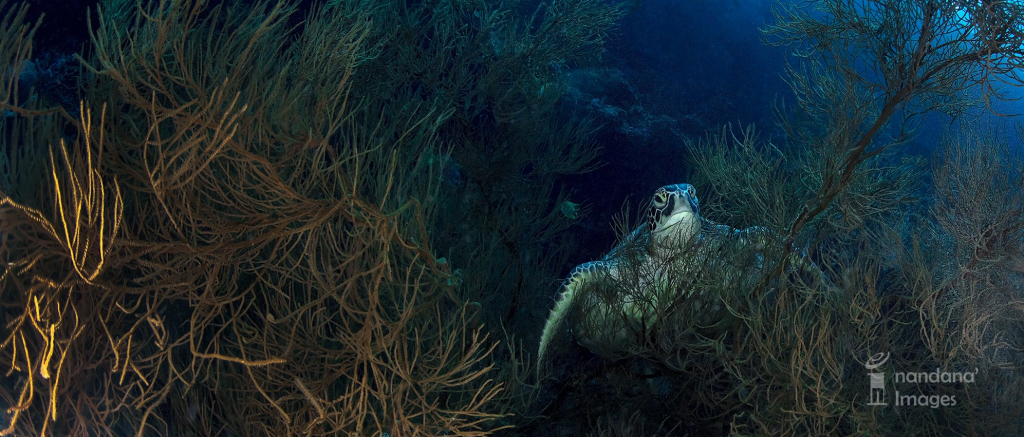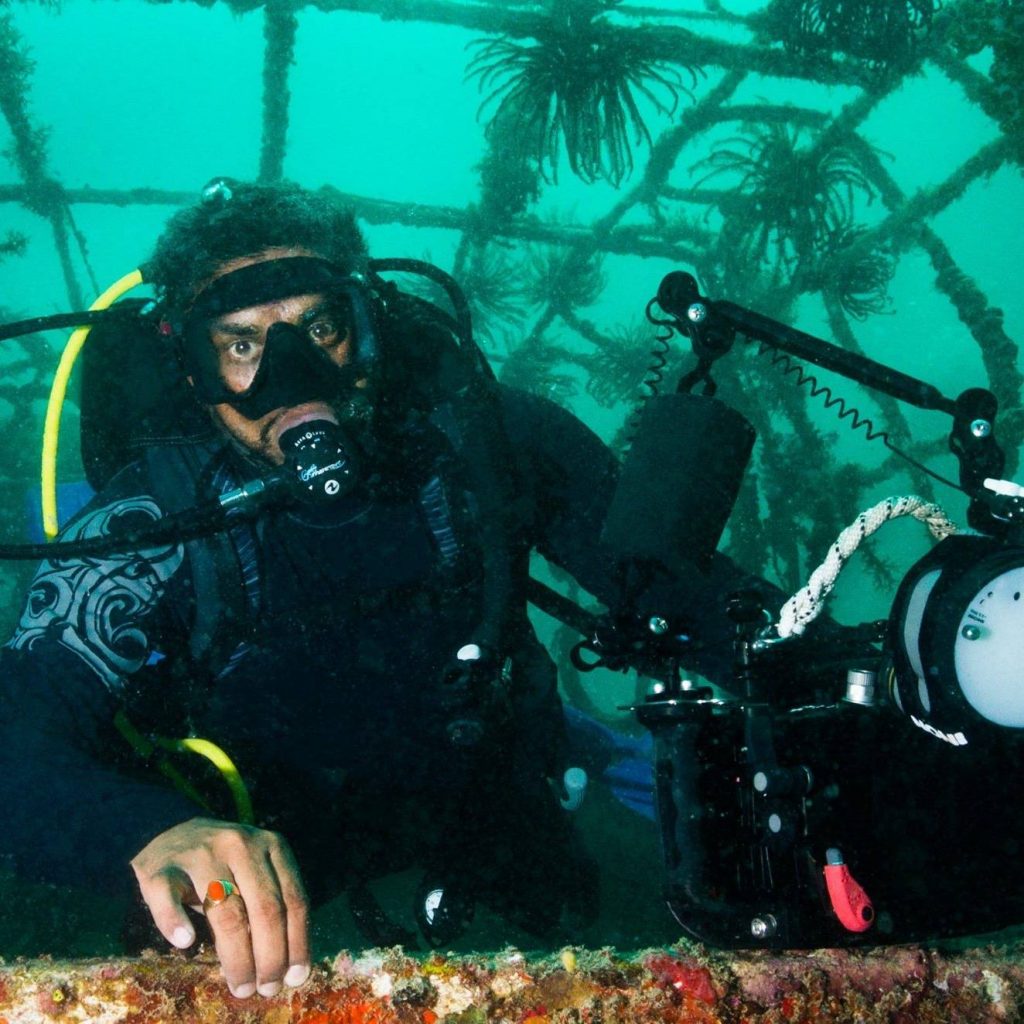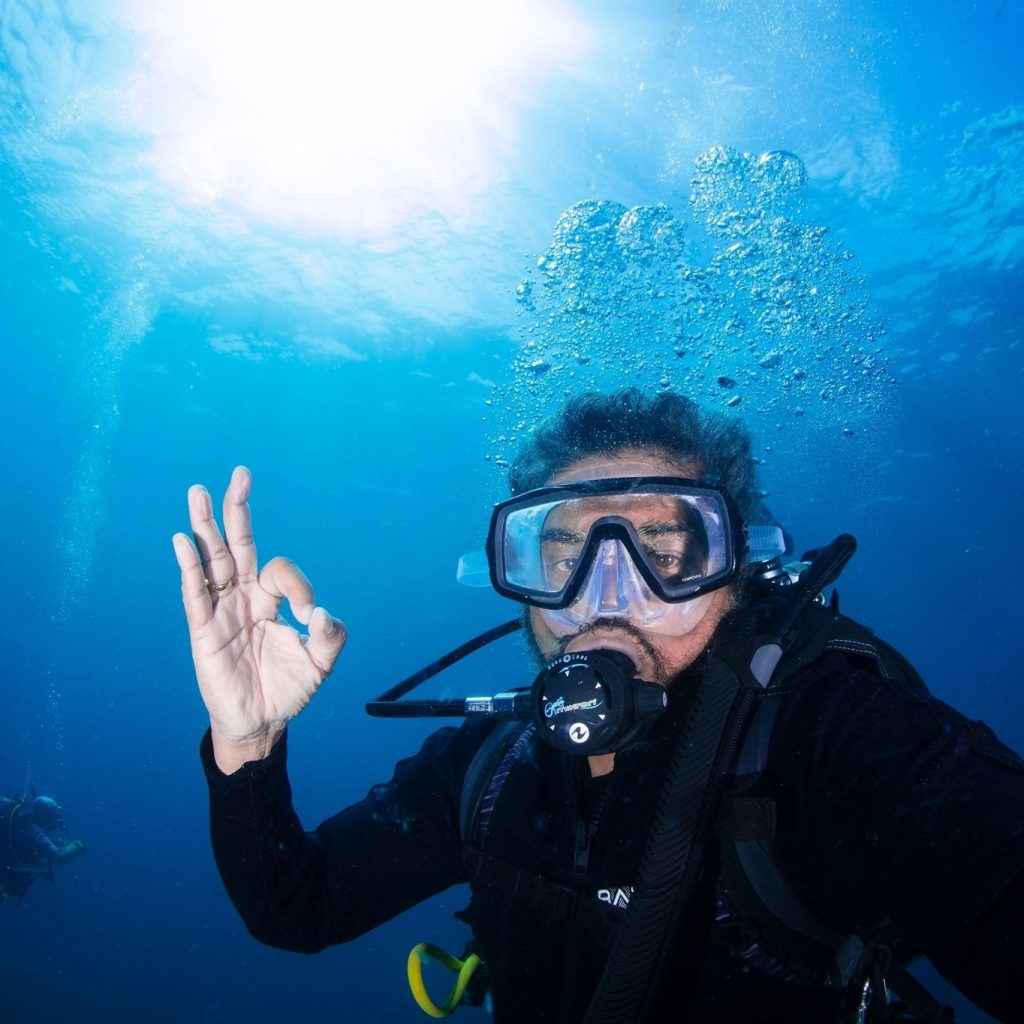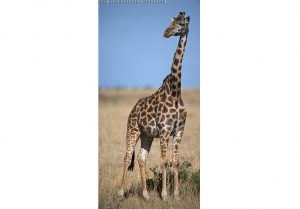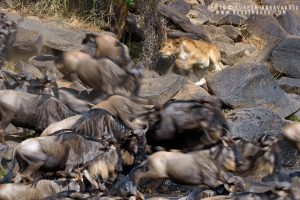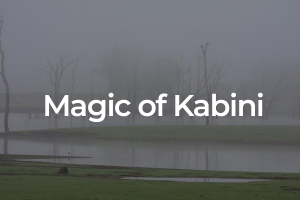1. How did your interest in underwater photography begin?
Water has been my weakness since childhood. The moment I decided to take time out of my corporate life, the first attraction was Ocean. It was always a dream to experience those National Geography and BBC’s Underwater moments in person. One plunge into the ocean in April 2010 (Incidentally the same month 10 years back), and I never turned back. Have visited 10+ countries, 40+ Diving destinations and logged more than 800 dives. But, I know it’s just the beginning, a lot more yet to come.
2. What are the different camera systems used for underwater photography?
Underwater photography is the next level of photography on land. It’s very easy to shoot with regular cameras available in the market (Like Canon G series with housing, Nikon Coolpix, Olympus tough series, etc..) without much experience. Then there are video setups available like GoPro or Sony 4K.
For a professional photography one needs to have a good camera (I can list Canon 5D series, Nikon D800 / 850, Mirrorless cameras from Sony, Canon or Nikon and there are more based on choice)-
Then we need a housing (Nauticam, Sea&Sea, Ikelite, Aquatica to name a few)
Lens choice will be very limited – 8-15mm Fisheye, 15mm Fisheye, 100mm Macro, 60mm macro, And so on…. based on the type of body you have there will be a choice of lenses in wide-angle and macro series and further for full-frame and cropped sensor bodies)
We need external Lighting (Inon, Olympus, Sea&Sea, Ikelite ….) because of the dark surrounding a good strobe (Flashlight) is very important
Then there’s an External Light in case you need for videos (There are several brands of LED lighting is available from 1000 lumens to 10000+ lumens based on requirement)
It will be good to carry a Spotlight in case of macro photography
Apart from these basic things, there will be a big list of add ons starting from a Flash trigger, extension arms, O rings, Clamps, latches, hooks, beam lights, etc…
The list is long and purely personal
3. What are the mandatory accessories and housings?
The list above explains it in detail
4. What camera do you use for underwater photography?
I am a Canon man. I have a Canon 5DsR and Canon 5D Mark iii bodies which have common housing – I have a wide-angle dome port suitable for 15mm Fisheye lens – One dome port to suit 8-15mm Fisheye Lens – Another Dome port to fit 100mm Macro – I also use a +10 Diopter (You can call it as a magnifier) for Super macro – I USe a Sony 4K Video for video requirements apart from taking video with Canon 5DsR – I also use an Olympus Tough TG 6 Camera as stand by
My External lightings are 2 INON Z 240 strobes and a KELDON 6000 Lumens wide-angle light for videos and night diving photography
5. How do you prepare your camera for diving?
It all starts with cleaning of housing and O rings once just before the diving day. Check all lenses, Camera bodies, Lights, Batteries charging, External battery, Torches, Lubrication of O rings, Fixing floaters on Arms,
Based on the dive site we choose the photography type and lens to be used, and accordingly, the housing has to be fixed with the respective lens, and dome with appropriate arms and floats.
It’s very important to check the battery charge, card space and all the required external settings on the camera is properly done (Like if the flash trigger is not switched on before sealing the housing, entire dive’s images will go for a task.
It’s very important to ensure that housing is properly fixed with vacuum sealing and ensure there are no leaks.
Check all the ad on lights, Add on video and camera is in place
6. What are some photography concepts unique to underwater photography?
Understanding the ISO and Aperture, Lighting, Positioning of flashlights, Composition of the images.
7. What are your main subjects underwater?
My First love is Coral scrapes, followed by Palagics (Sharks, mantas, Turtles, Fish schools, etc..) and then Macro (Nudibranchs, Sea horses, Shrimps, etc..) in the same order. A huge coral scape with some life round will always be an attraction for me
8. What are some of the locations you’ve shot at?
My Personal Favorite is Indonesia (Raja Ampat, Komodo islands, Bunaken, Lembeh, Ambon, Gorontalo, Pulau Weh, and so on..) Followed by the Philippines. The destinations I have to still cover in these two countries is enough for one lifetime. And then there’s a big list of destinations in India, Thailand, Malaysia, Micronesia, South America, Fiji and so on…
9. What are the most accessible spots in and around India?
The best and easily accessible destination in India is the Andaman Islands. Havelock and Neil in Andaman have some world-class dive sites to suit all levels of Scuba Divers. And then there’s Lakshadweep with many small islands accessible for divers. Then There’s Netrani Islands near Murudeshwar in Karnataka, Goa, Pondicherry, to name prominently. There’s some exploration diving happening in Visakhapatnam, Chennai, Tuticorin also recently.
10. What is your advice for aspiring underwater photographers?
Be a responsible and safe Scuba Diver before you try your hand on Underwater photography. The basic thing is to become an experienced and buoyant Scuba diver before taking a camera set up to the water. Because it’s important to be safe in a totally new world with plenty of unknown life around, and then major concern toward the safety of Corals, Fishes and macro life around.
11 Where can we see your work and learn more?
My Facebook page – https://www.facebook.com/NANDANAIS1 , Instagram page https://www.instagram.com/nandana_images/ has many posts of my trips. My website is under update now. Should be active in a few days. You can always message me or contact me on [email protected]
12. Do you do workshops?
I have a fully equipped Scuba diving Academy in Bangalore by name Aquanauts Academy of Diving which taught Scuba diving from beginners to Advanced level to technical diving including training for Underwater Photography. Please get in touch with us on +919108244244 or write to me for more details.
I’m more than happy to take groups for training or even to experience the beautiful world there once before deciding on Underwater photography.

